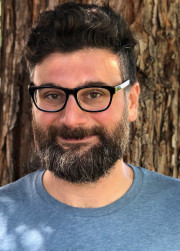Ancestral Recombination of SARS-CoV-2

Russell Neches works at the Joint Genome Institute at Berkeley Lab where he is interested in the natural histories of microorganisms — particularly, when and how they have moved from place to place and host to host.
Investigator: Russell Neches
Affiliation: Joint Genome Institute
This team is exploring the ancestral recombination and evolutionary origins of SARS-CoV-2 using Machine Learning/AI computational techniques. They are using existing tools (e.g., ARGweaver, ClonalOrigin, InferRho) to examine SARS-CoV-2 and relevant outgroup genomes for evidence of recombination.
Recombination takes place in some retroviruses but is not well understood in coronaviridae and may play a role in determining whether the COVID-19 virus can be effectively controlled with vaccines. If SARS-CoV-2 strains are able to recombine with one other or with other coronavirus species, a vaccine may only confer seasonal protection.
About NERSC and Berkeley Lab
The National Energy Research Scientific Computing Center (NERSC) is a U.S. Department of Energy Office of Science User Facility that serves as the primary high performance computing center for scientific research sponsored by the Office of Science. Located at Lawrence Berkeley National Laboratory, NERSC serves almost 10,000 scientists at national laboratories and universities researching a wide range of problems in climate, fusion energy, materials science, physics, chemistry, computational biology, and other disciplines. Berkeley Lab is a DOE national laboratory located in Berkeley, California. It conducts unclassified scientific research and is managed by the University of California for the U.S. Department of Energy. »Learn more about computing sciences at Berkeley Lab.







